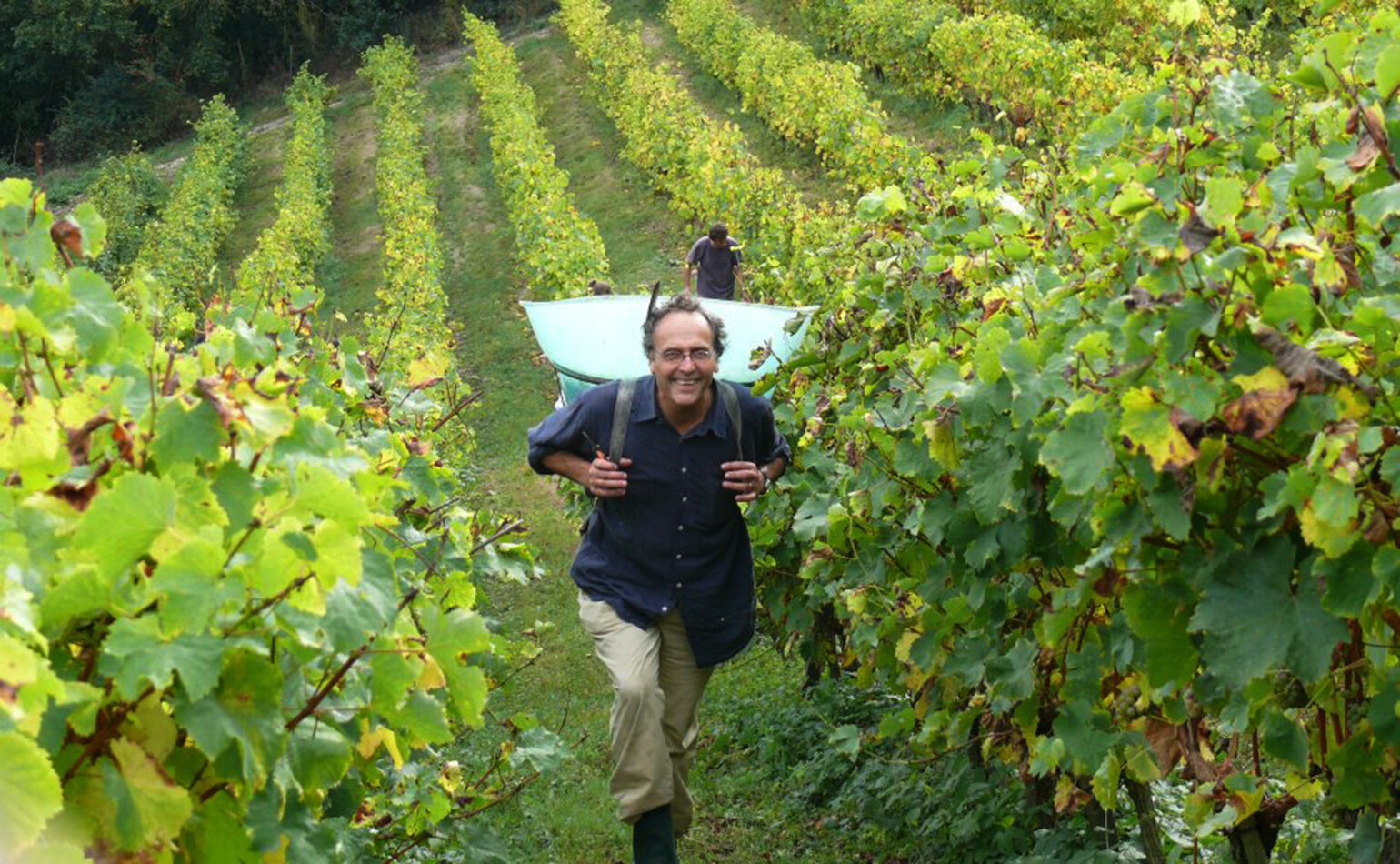THE VINEYARD
Le Clos de la Coulée de Serrant was first planted by Cistercian Monks in the year 1130. It is a 7 ha walled vineyard on a very steep schist slope above the Loire River near Angers. There is virtually no topsoil, the vines cling to the crumbly schist rocks. It is one of just 3 French Appellations to be a Monopole, that is, a single vineyard that has its own appellation and is owned by one estate.
BIODYNAMICS
A shift in paradigm…
It is becoming widely accepted that the use of chemical herbicides, pesticides and fungicides etc in agriculture has a very adverse impact on the environment and the farmers who work the land. There is thus a strong shift towards organic viticulture. But the mentality of chemical viticulture and organic viticulture is fundamentally the same - the farmer wishes to harvest a crop from a monoculture, and must combat to eliminate the competing elements (pests, weeds, diseases). The choice is simply which spray to use (the chemical or the organic).
Biodynamics on the other hand, totally changes the mentality of the farmer. The micro-ecosystem of each plot of land becomes the centre point, not the crop itself. the Biodynamicist seeks to create natural balances within the farm ecosystem, in order to reduce or cease all treatments and sprays, with the exception of homeopathic treatments designed to encourage the plants to do the work for themselves. This is a significant difference, and is more and more understood to create profoundly interesting and intricate wines. With almost no exception, every single one of the greatest estates in Burgundy are now farmed Biodynamically. Bordeaux, reluctant at first, is swiftly plotting the same course.
THE WINES
The Joly family makes 3 wines, all dry whites made exclusively from the Chenin Blanc variety.
First, there is Les Vieux Clos in AOC Savennières, a beautiful assortment of old walled vineyards on the top of the slope. The schist here is topped with roughly one metre of clay soil. The wines are packed with ripe fruit flavours of melon and orchard fruit, and the finish is classic Savennières - powerful and long.
Next, Le Clos de la Bergerie in AOC Savennières "La Roche aux Moines", a single vineyard mid slope, where there is about half as much soil on top of the schist. These wines tend to get riper, and can often finish with a touch of residual fruit sweetness. They are the most forthright of the wines.
But none equals the flourish, Le Clos de la Coulée de Serrant, which holds its own Appellation. The most powerful, long, intense of them all. In youth, it smells of fresh rain on stones, with hints of melon, stone fruit and pear skin. With age, it becomes a tea chest of bergamot, dried fruits, honey and dried flowers. The wines need a long spell in the decanter, a day is best if you can wait, and enjoy the wine over the course of a full week if you can resist !
WHAT OTHERS SAY
Many wise wine tasters and writers have explored and adored these wines before me. But in particular, I'd like to share with you some beautiful images and writing by Jamie Goode on his blog Wine Anorak.
Current Vintage.
Les Vieux Clos / 2016 - AOC Savennières
Clos de la Bergerie / 2016** - AOC Savennières "La Roche aux Moines”
La Coulée de Serrant / 2016 - AOC Coulée de Serrant (Monopole)
Mature Vintage.
Clos de la Bergerie / 2011 - AOC Savennières "La Roche aux Moines”
La Coulée de Serrant / 2011 - AOC Coulée de Serrant (Monopole)





